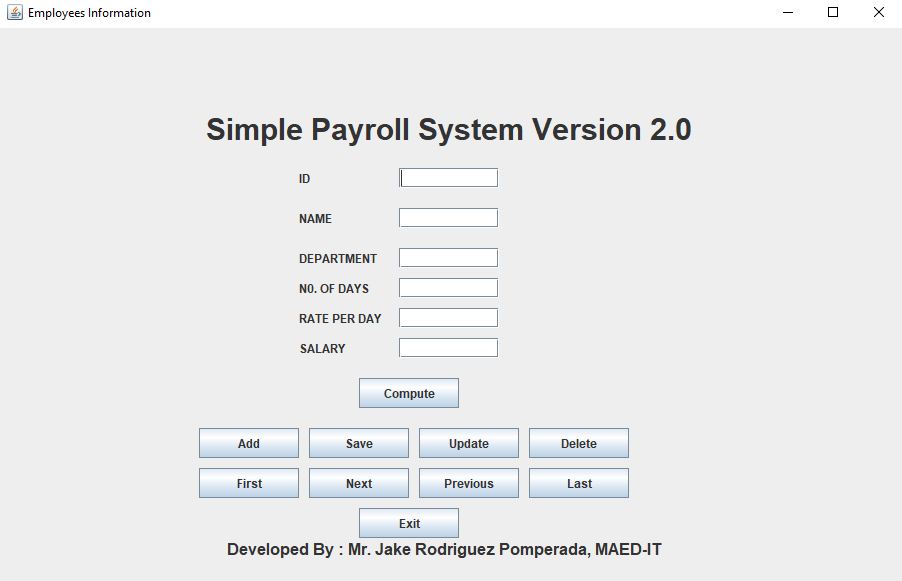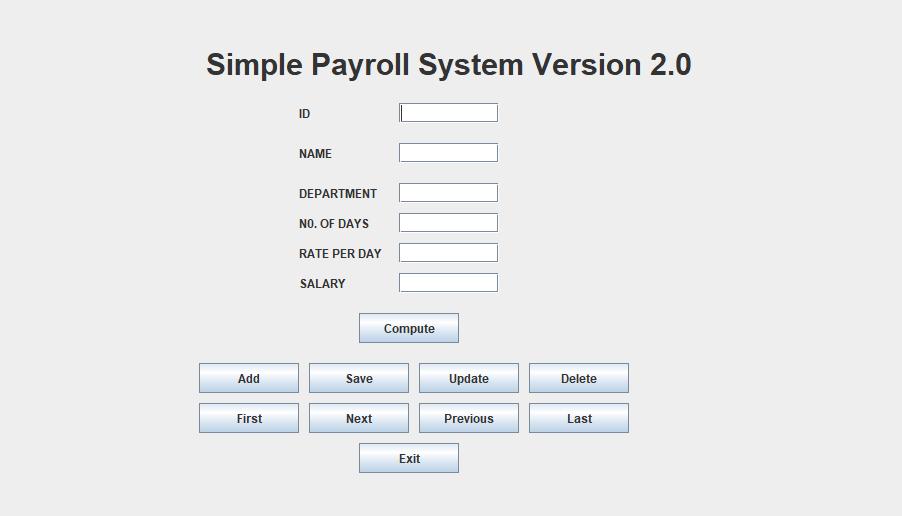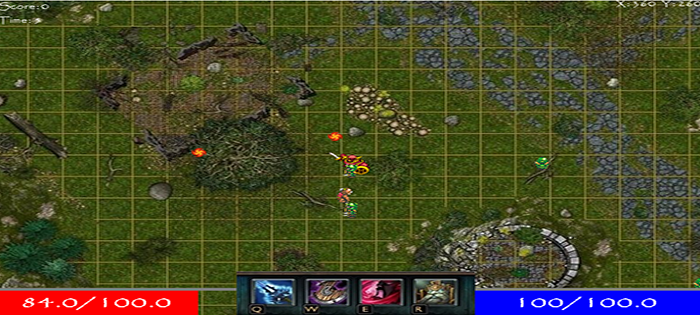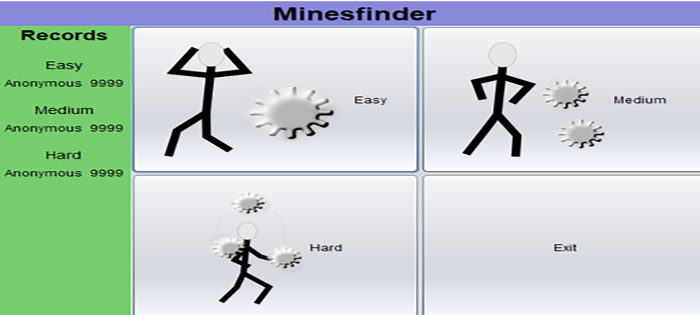Project: Simple Employee Payroll System in Java with source code
About Project
Employee Payroll System is a simple application using graphical components in the Swing toolkit in Java. The feature of this simple application includes CRUD and calculating total salary an employee. In order to add a record, the user has to provide id, name, department, per day rate and salary of an employee. Other features include updating, deleting and viewing records. This whole system is not built with the help of Netbeans IDE.
The front end of this simple project is Java and back end is Ms. Access. Design of this project is very simple so that the user won’t find any difficulties while working on it. To run this project you must compile and run from the Command prompt (for Windows users). Simple Employee Payroll System in Java with source code is free to download, Use for educational purposes only! For the project demo, have a look at the image below.




how to see saved data in this project
I have an error Decode barcode images using the ZXing library usage: CommandLineRunner { file | dir | url } [ options ] –try_harder: Use the TRY_HARDER hint, default is normal (mobile) mode –pure_barcode: Input image is a pure monochrome barcode image, not a photo –products_only: Only decode the UPC and EAN families of barcodes –dump_results: Write the decoded contents to input.txt –dump_black_point: Compare black point algorithms as input.mono.png –multi: Scans image for multiple barcodes –brief: Only output one line per file, omitting the contents –recursive: Descend into subdirectories –crop=left,top,width,height: Only examine cropped region of input image(s) –threads=n: The number… Read more »